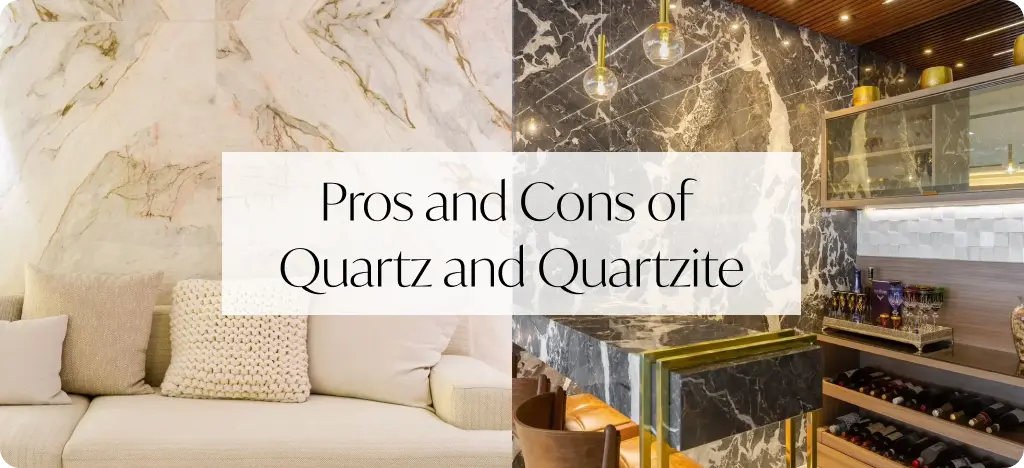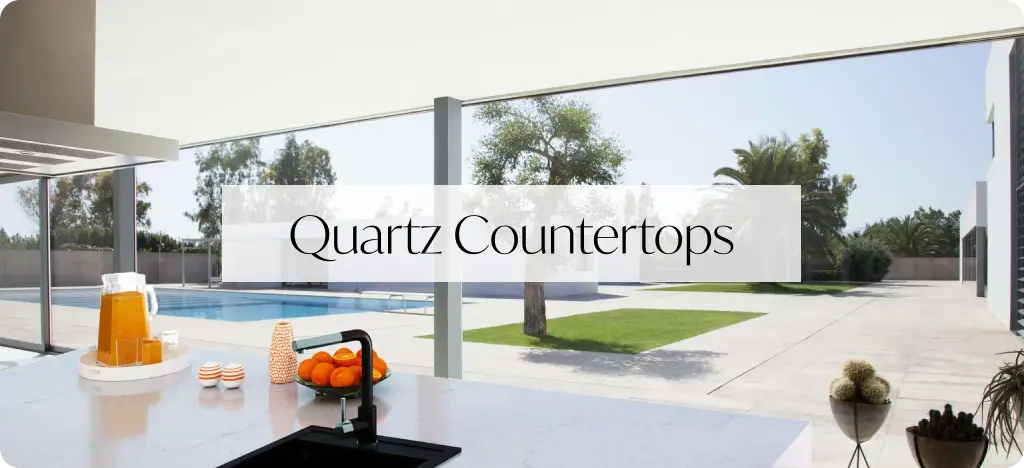Quartz vs Quartzite: The Ultimate Guide

Quartz vs Quartzite: The Ultimate Guide
Choosing the perfect material for your countertops, flooring, or other surfaces can feel like navigating a jungle of options – you want something stunning, durable, and easy to live with. Enter quartz and quartzite, the two popular options known for their blend of elegance and toughness. Often confused at first glance, these materials have distinct personalities.
Quartz vs Quartzite: The Ultimate Guide
Choosing the perfect material for your countertops, flooring, or other surfaces can feel like navigating a jungle of options – you want something stunning, durable, and easy to live with. Enter quartz and quartzite, the two popular options known for their blend of elegance and toughness. Often confused at first glance, these materials have distinct personalities.
Quartz is the engineered wonder, offers a rainbow of colors and consistent patterns, perfect for design flexibility. Quartzite, the natural beauty, boasts unique veining and incredible strength. This guide explores their fascinating differences, helping you find the perfect match for your project.
Understanding Natural Stone and Engineered Stone
What are Quartz and Quartzite?
- Quartz: Imagine tiny quartz crystals mixed with resins and pigments. This manufacturing process allows for a vast array of colors and patterns, making quartz highly versatile.
- Quartzite: Picture sandstone transformed under intense heat and pressure. This natural process creates a dense, durable stone often resembling marble.

How are They Formed?
- Quartzite: Millions of years of geological processes. Sandstone, rich in quartz, undergoes extreme heat and pressure, causing the quartz grains to recrystallize and form a tightly bonded stone. This natural formation is responsible for quartzite’s unique appearance and exceptional hardness.
- Quartz: Being man-made, involves combining ground natural quartz with polymer resins and pigments. This process allows manufacturers to create a wide variety of designs and colors, making quartz a chameleon for various design styles.
Click here to browse our extensive selection of Quartz slabs.
Key Differences Between Quartz and Quartzite Countertops
| Aspect | Quartz | Quartzite |
| Composition | Engineered stone | Natural stone |
| Formation Process | Made from ground quartz crystals combined with resins and pigments | Formed from sandstone under high heat and pressure |
| Appearance | More design options. Consistent colors and patterns, customizable | Unique, natural variations in color and veining |
| Durability | Durable, resistant to scratches and impacts | Extremely hard, more resistant to heat and scratches |
| Heat Resistance | Moderate, can be damaged by excessive heat | Excellent, withstands high temperatures |
| Maintenance | Low maintenance, no sealing required | Requires regular sealing to prevent staining |
| Stain Resistance | Non-porous, highly resistant to stains | Can be stain-resistant with proper sealing |
| Cost | Generally more affordable | Typically more expensive |
| Color Options | Wide range of colors and patterns available | Limited to natural colors, primarily whites, grays, and beiges |
| Installation | Easier to fabricate and install | More challenging and costly to work with |
| Usage | Ideal for kitchen countertops, bathroom vanities, backsplashes | Suitable for countertops, flooring, and feature walls |
View our selection of Quartzite slabs and discover the perfect quartzite slab for your project.
Pros and Cons of Quartz and Quartzite

Quartz
- Pros: Versatile with a wide range of colors and patterns, low maintenance, non-porous surface resists stains and bacteria, consistent appearance for a seamless look.
- Cons: Sensitive to high heat, can fade or yellow with prolonged sun exposure, lacks the unique charm of natural stones, limited by color options compared to engineered stones.
Quartzite
- Pros: Exceptional hardness and durability, excellent heat resistance, natural beauty with unique veining patterns, can be highly stain-resistant with proper sealing.
- Cons: Requires regular sealing to maintain stain resistance, generally more expensive than other countertop materials.
Aesthetic and Design Considerations
Quartz: The Adaptable Artistry of Countertops
Quartz offers a kaleidoscope of colors and patterns, mimicking the look of marble, granite, or even creating entirely unique designs. Its non-porous surface and consistent coloring make it ideal for countertops, backsplashes, and even wall cladding, seamlessly integrating into any design scheme.
Quartzite: Nature’s Timeless Beauty
Each quartzite slab tells a unique story with variations in color and veining. You’ll find gorgeous shades of white, gray, and beige, often with stunning veining patterns. While its color options are limited compared to quartz, quartzite’s natural elegance brings a touch of nature’s artistry to your home.
Modern vs. Traditional: Choosing Your Style
Quartz aligns perfectly with modern and contemporary designs, offering a clean and sophisticated look. Quartzite, with its natural charm, enhances traditional, rustic, or luxurious spaces with its elegant patterns. Ultimately, choose the material that speaks to your style and design vision.
Want to explore the design possibilities of quartz and quartzite? Visit our Toronto showroom today!
Performance and Durability
Hardness and Scratch Resistance
- Quartz: Incredibly durable, thanks to its engineered composition. It resists scratches and impacts well.
- Quartzite: One of the hardest natural stones, even surpassing granite. This exceptional hardness makes it highly resistant to scratches and abrasions, ideal for high-traffic areas.
Heat Resistance Comparison
- Quartz: Can withstand moderate heat, but excessive heat can damage the resin used in its composition. Use trivets or hot pads to protect quartz countertops from hot pots and pans.
- Quartzite: Due to its natural formation process, quartzite boasts excellent heat resistance. It can withstand high temperatures without damage, making it a superior choice for kitchen countertops and fireplaces.
Stain and Chemical Resistance
- Quartz: The non-porous surface of quartz makes it highly resistant to stains and chemical damage. Spills can be easily wiped away without penetrating the surface, making quartz a low-maintenance option.
- Quartzite: While naturally more porous than quartz, quartzite can be sealed to enhance its stain and chemical resistance. Regular sealing is recommended to maintain its protective barrier and ensure long-lasting beauty.
Cost and Budgeting for Your Countertops

Price of Quartz vs Quartzite
The cost of quartz and quartzite can vary significantly based on factors such as quality, color, and brand. Generally, quartz tends to be more affordable than quartzite. High-end quartz can be more expensive than basic quartzite, but overall, quartz is usually the more budget-friendly option.


0 Comments